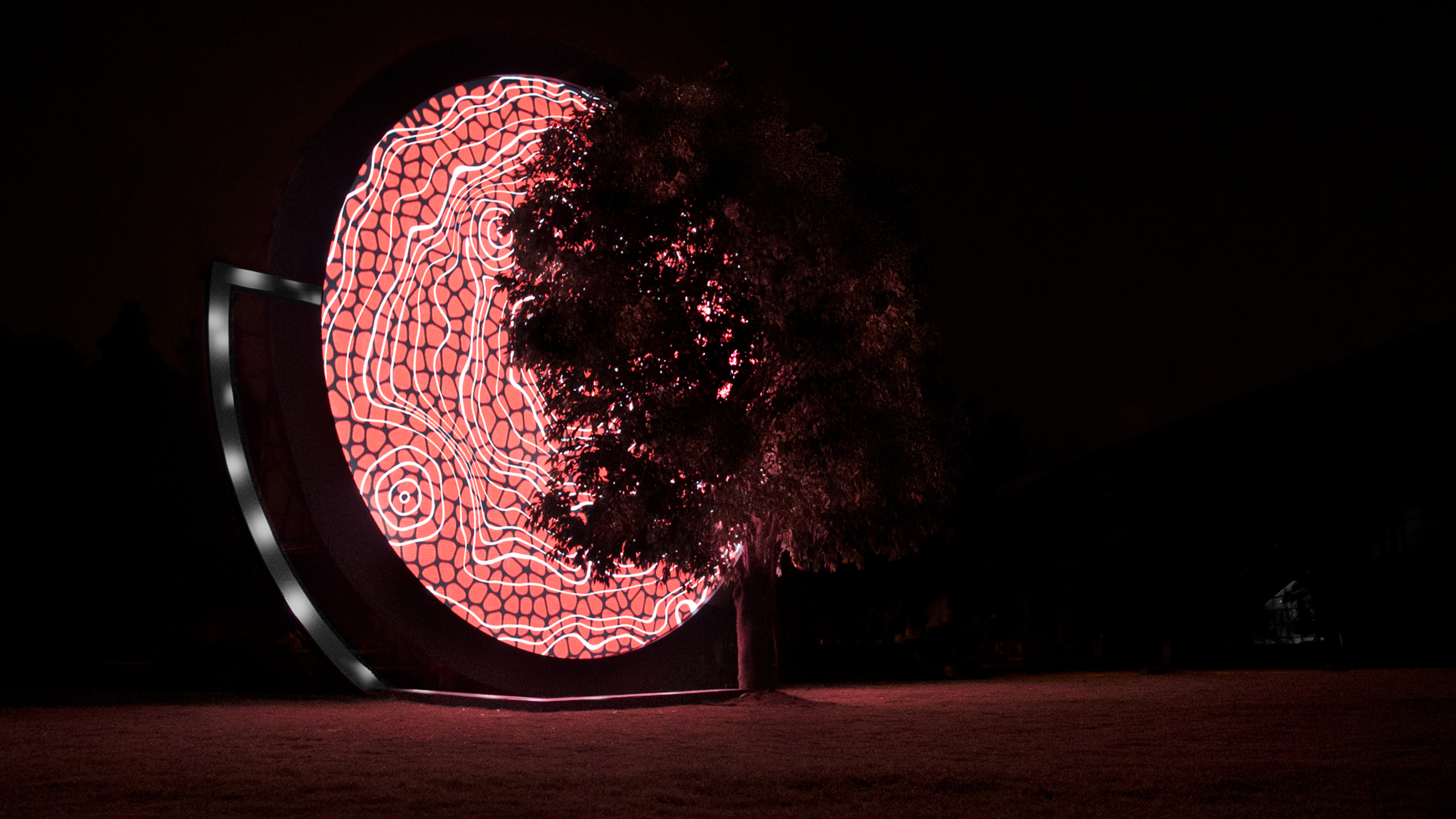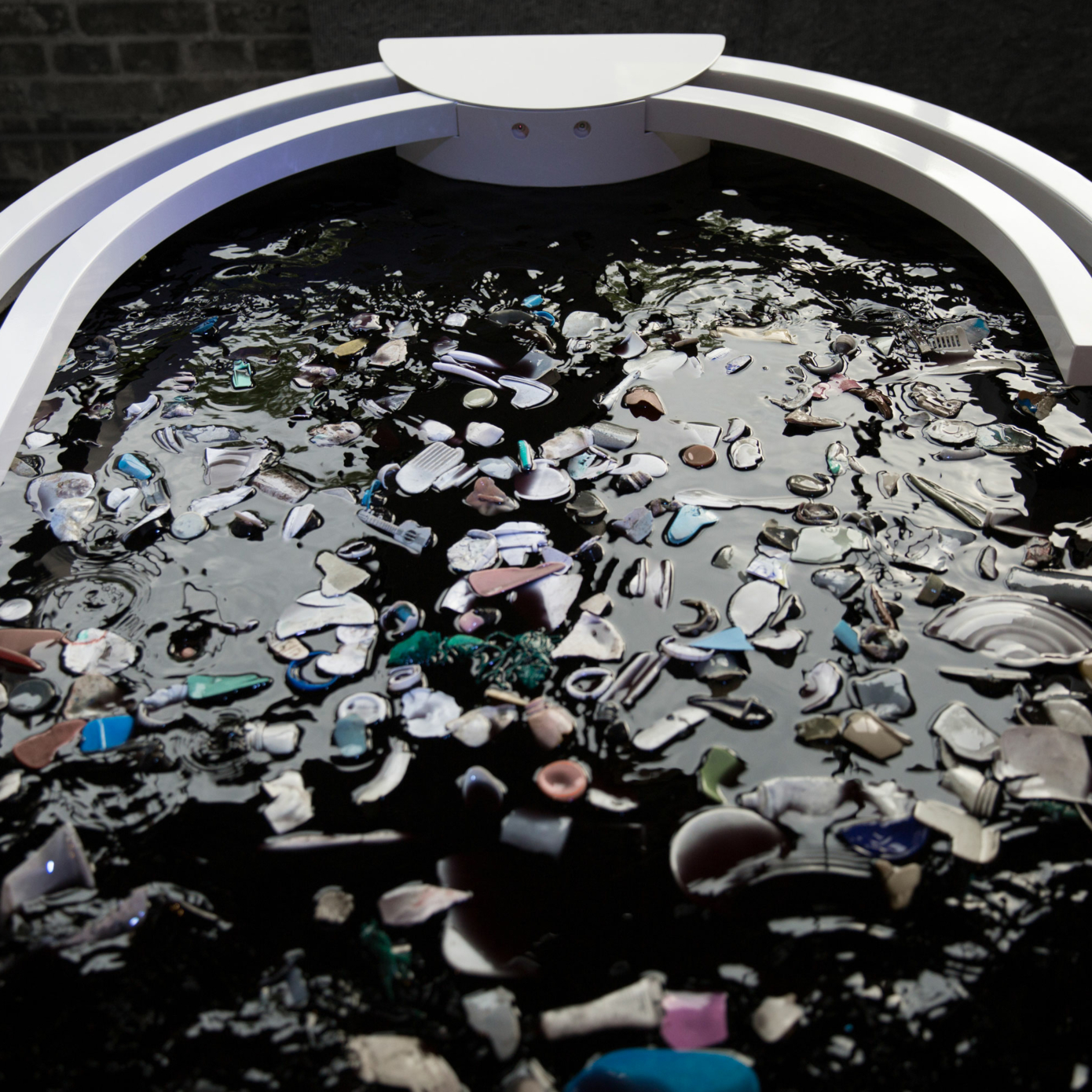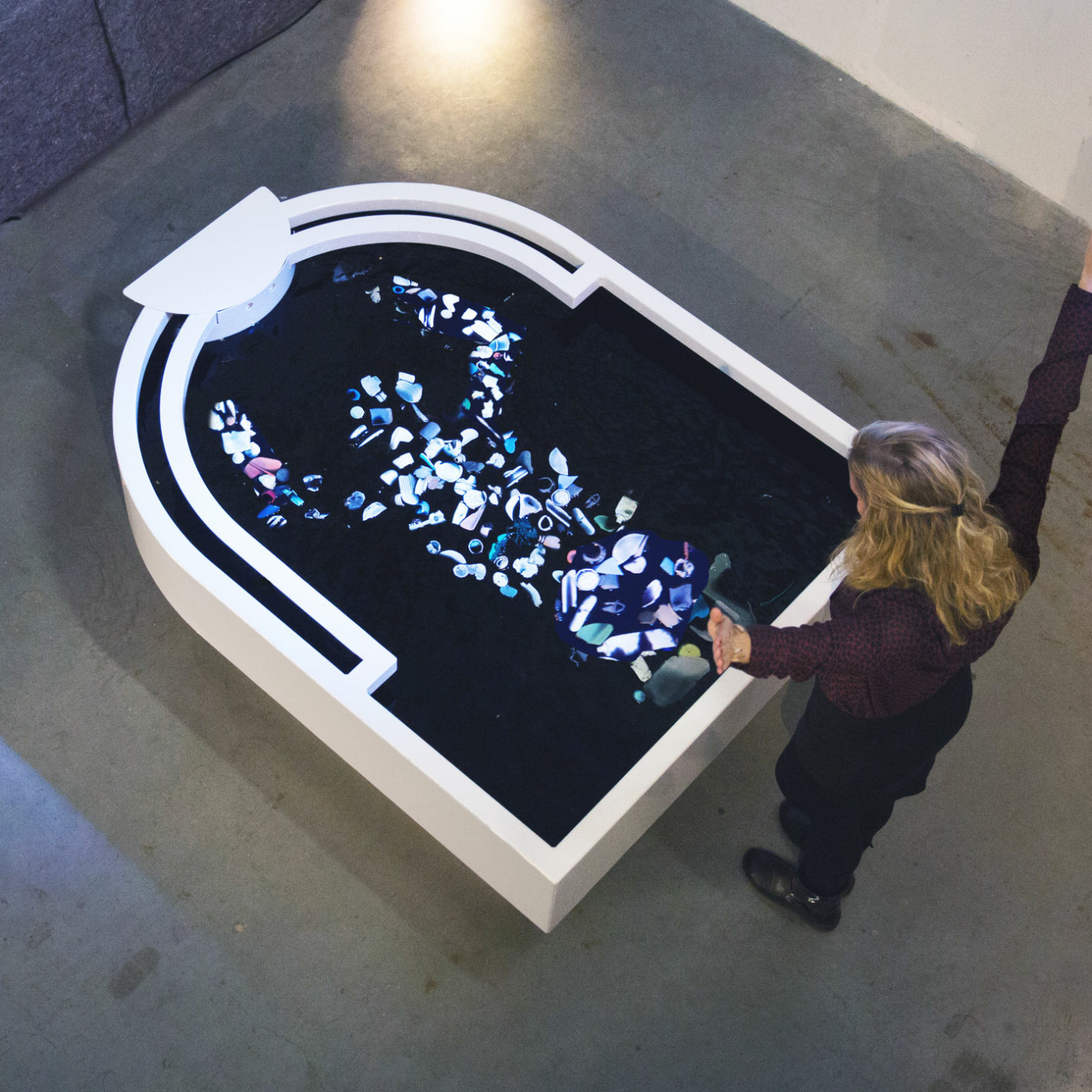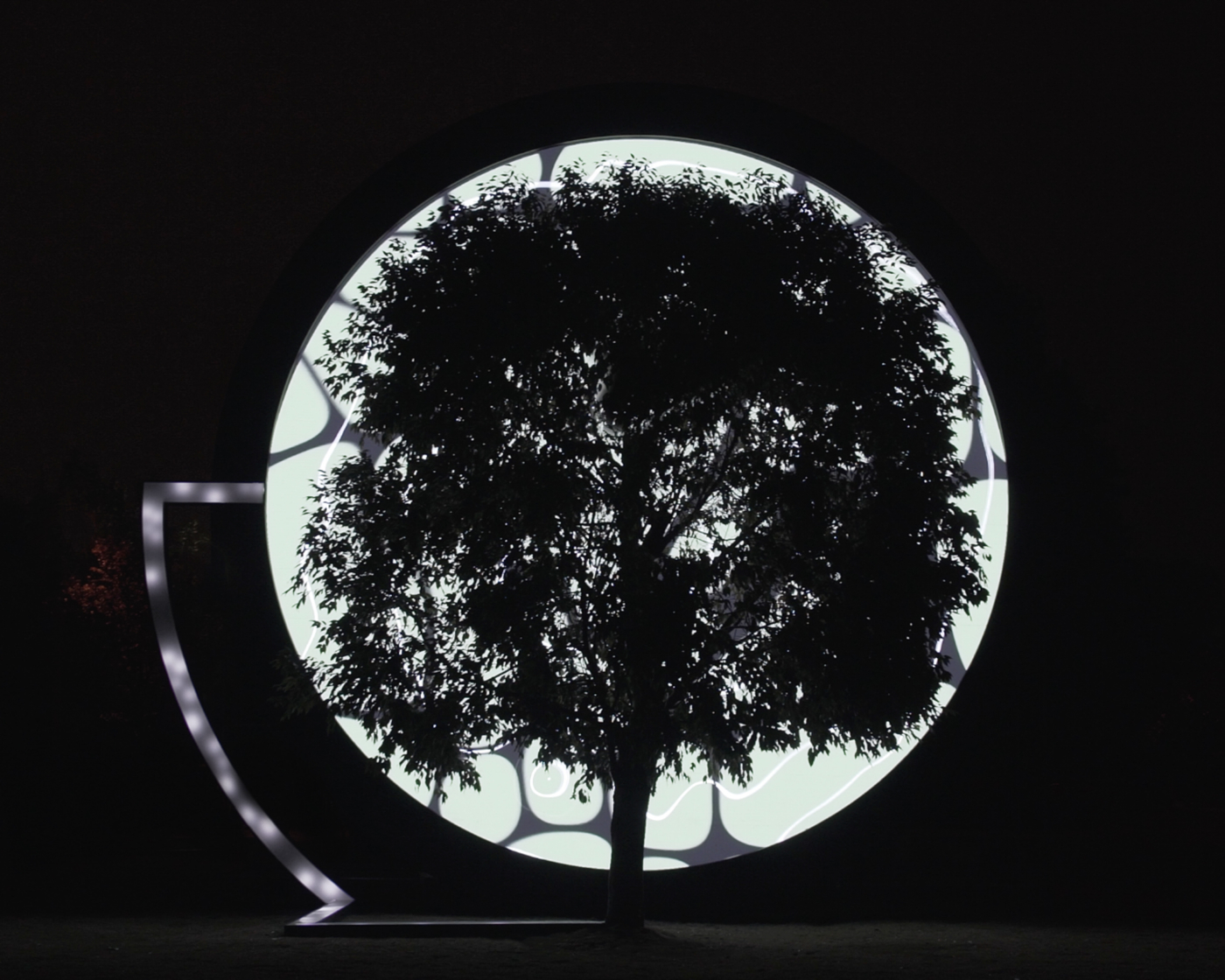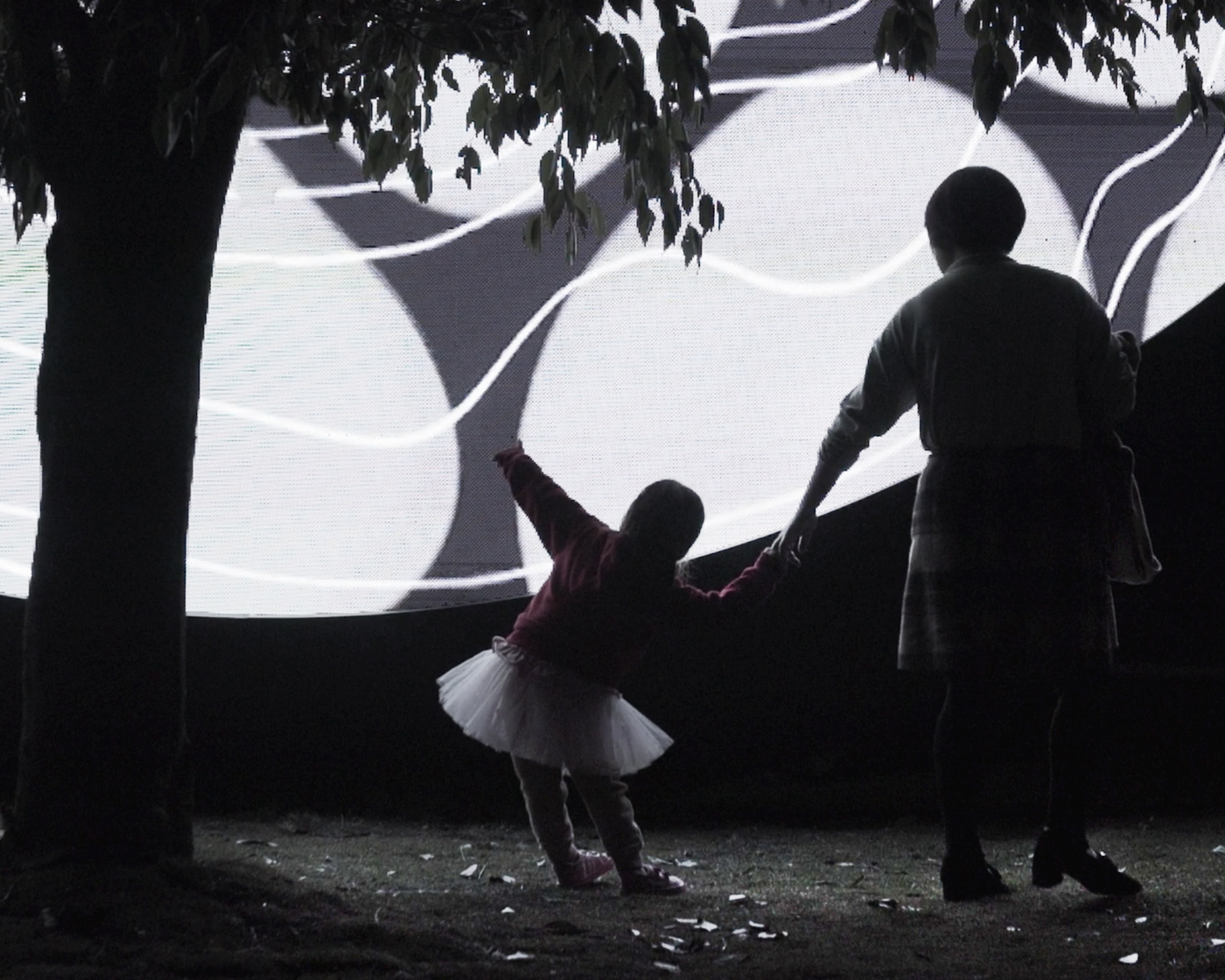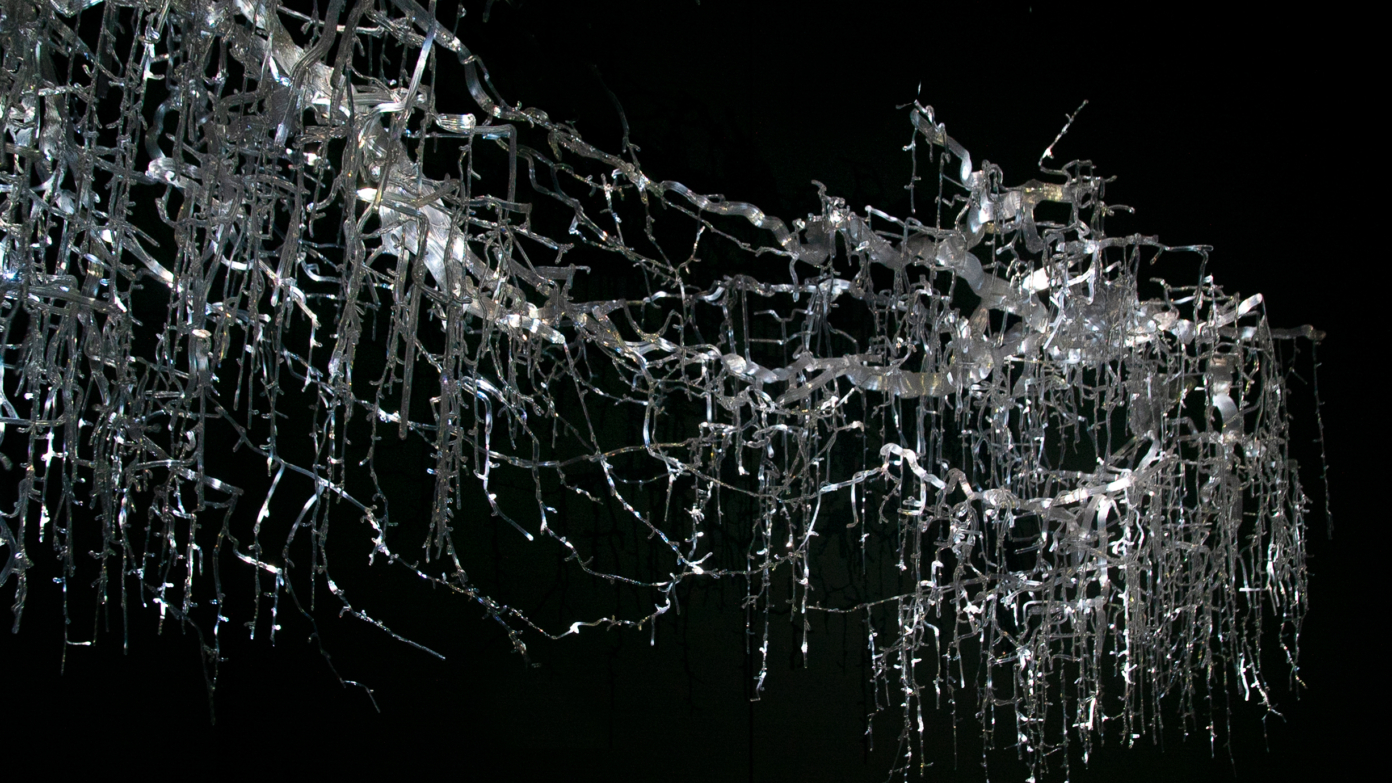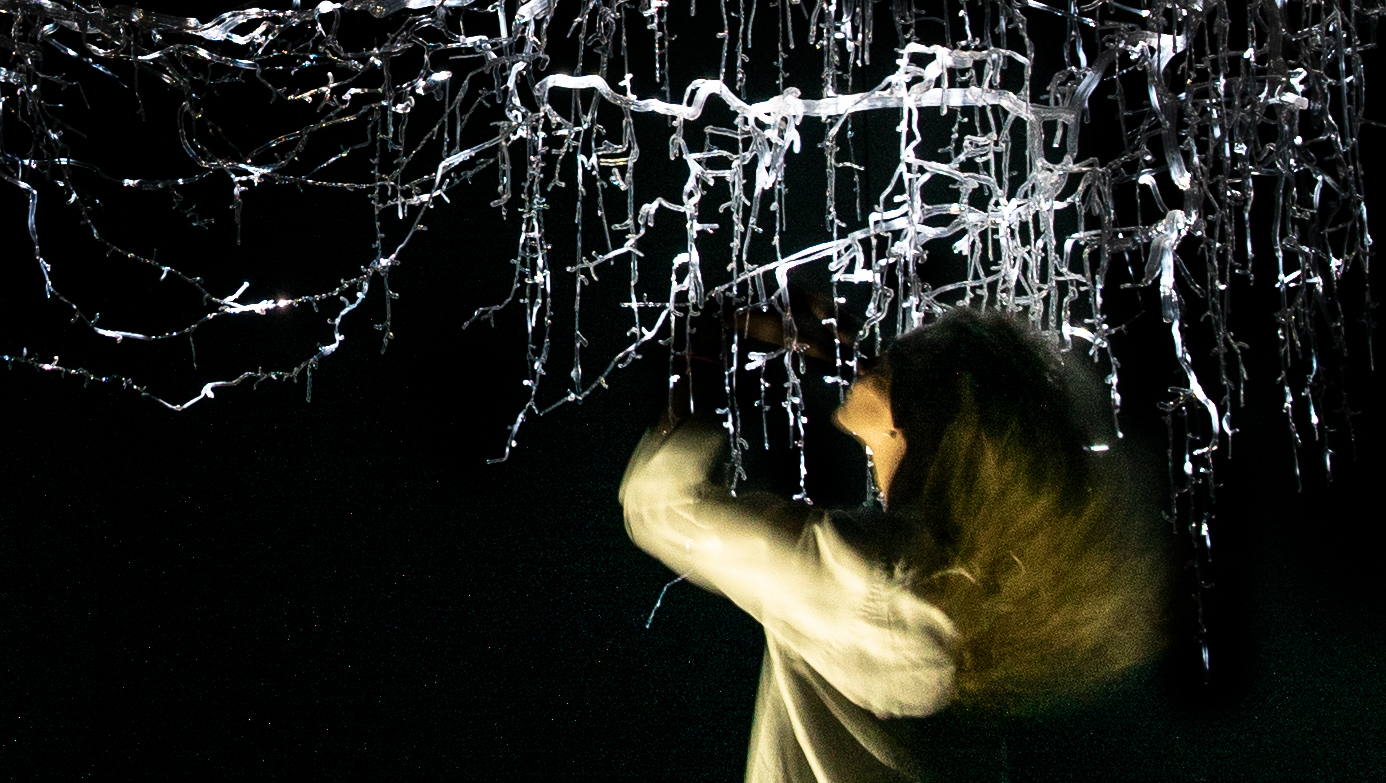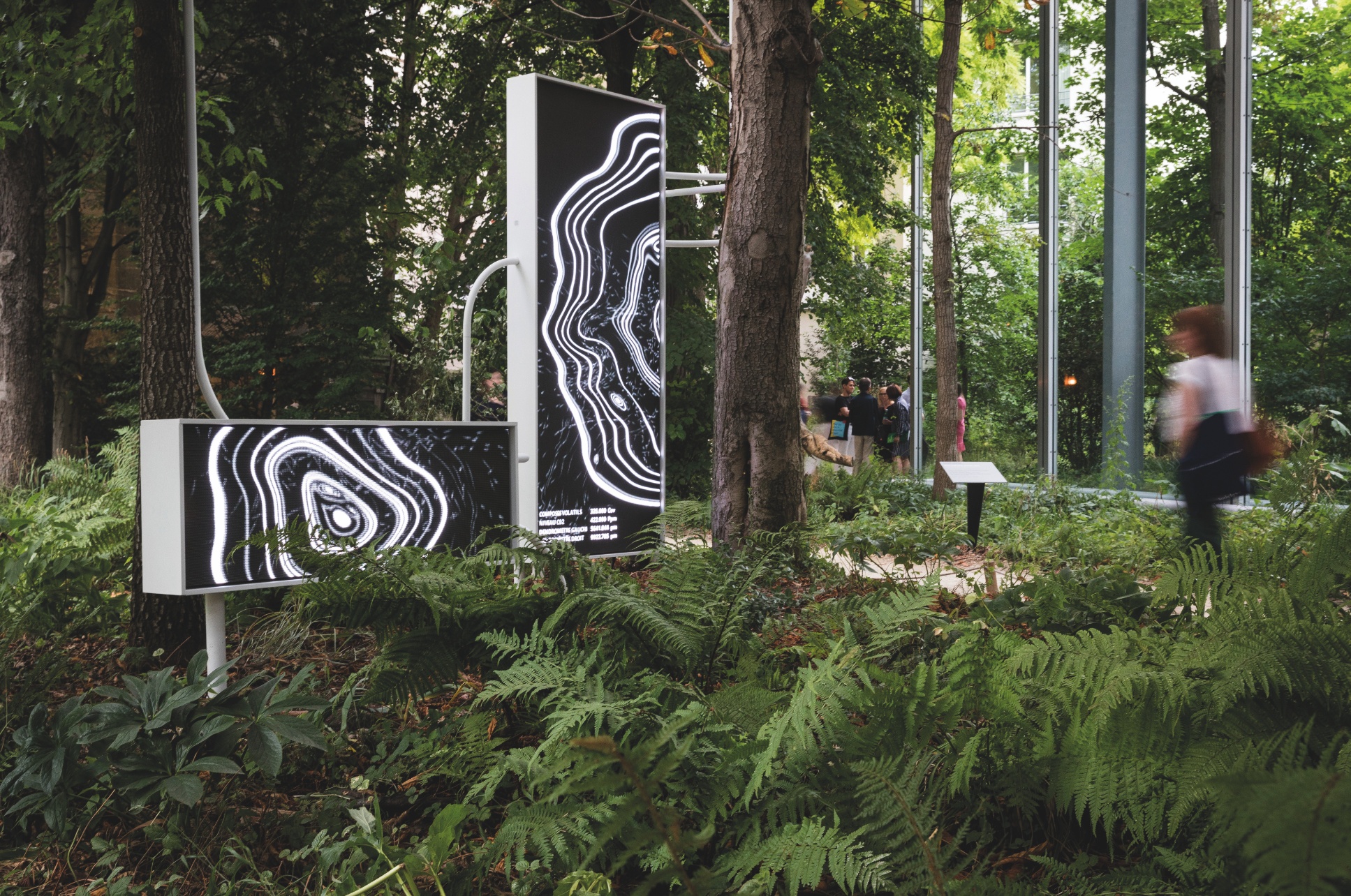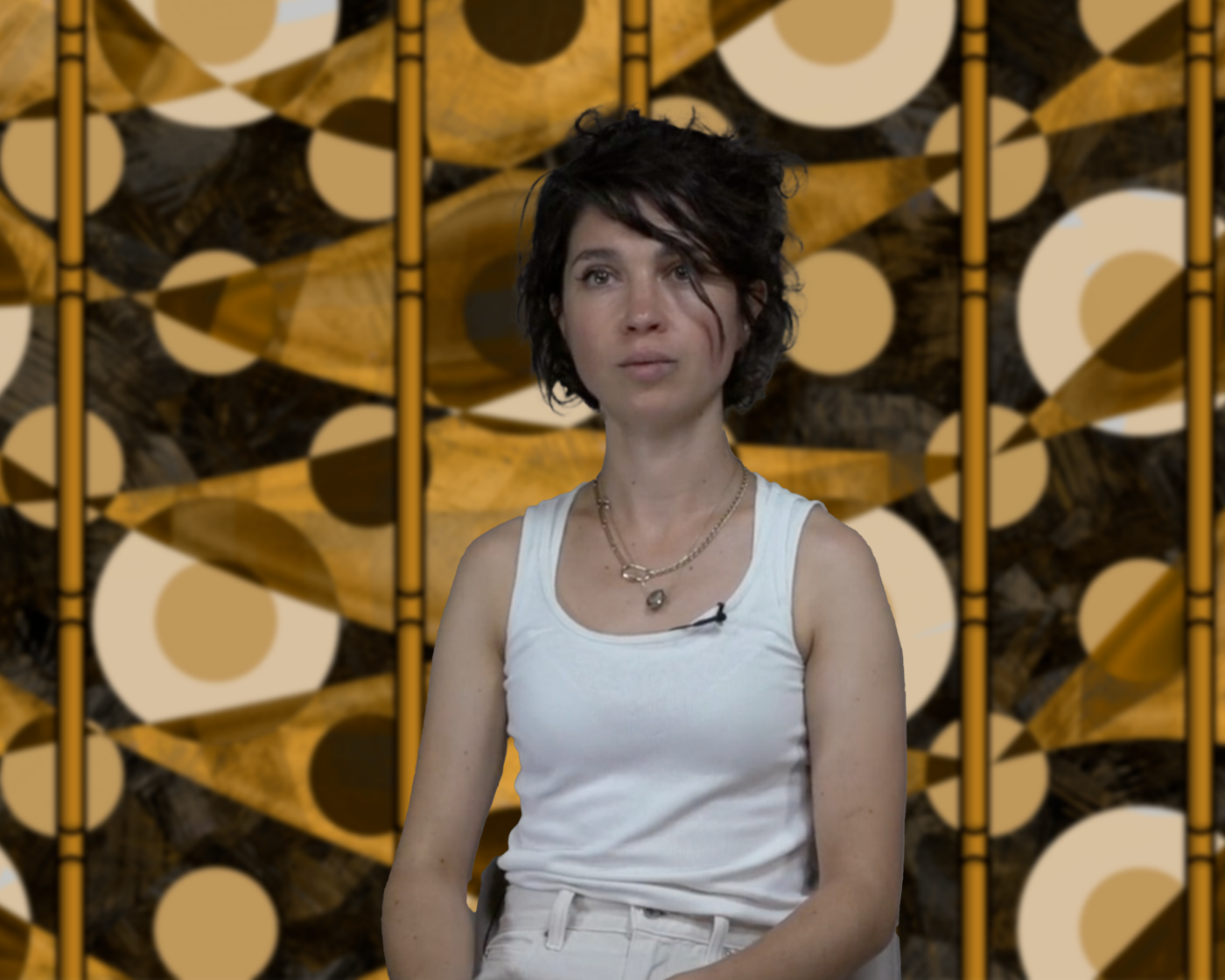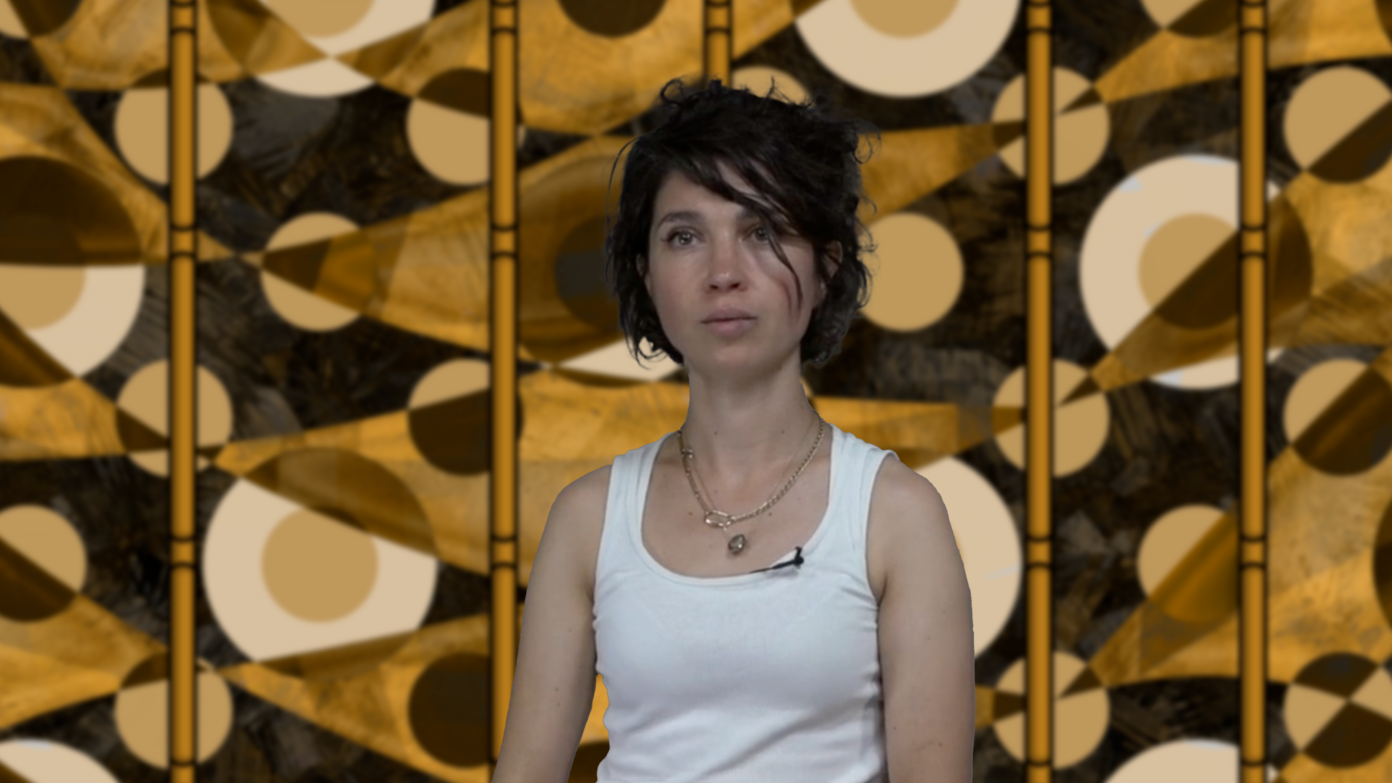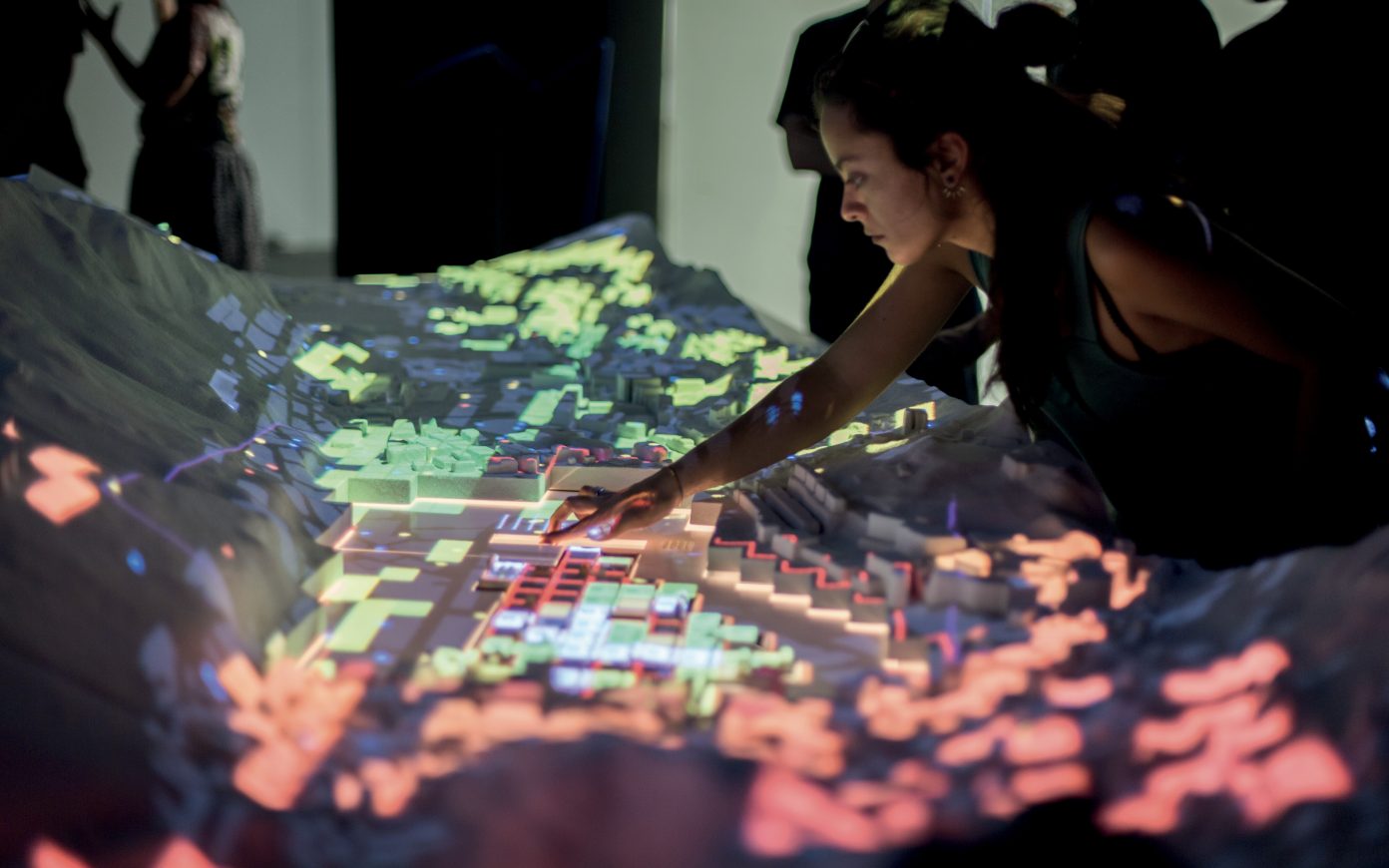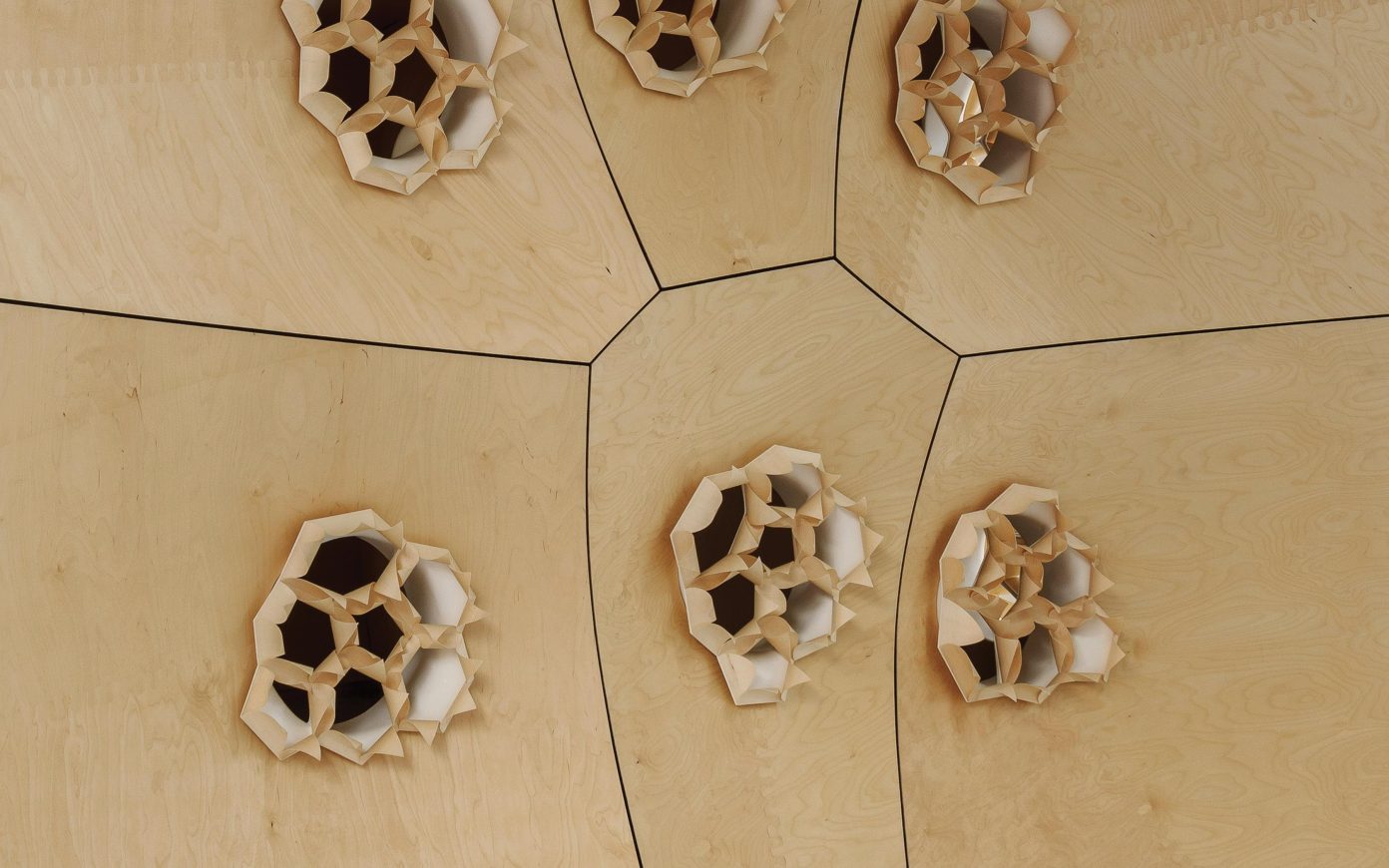An interesting aspect of these immersive installations is that they create a sense of wonder. Do they offer a way of having an impact on people’s behavior in a personal and sensitive manner that may be more effective than scaring them with facts?
I try to avoid being provocative or shocking people as newspapers already do that. Most of the facts coming out are pretty scary and very often when you learn about them you feel overwhelmed. It paralyzes you. You don’t know what to do or how to react. What I try to do in my work is to allow people to understand and emotionally connect to the issue in a way that is not shocking in the beginning, but that will linger. A good example of that is Plastic Reflectic, my work about plastic pollution in the oceans. When you approach the piece, you can play with it, and people think it’s funny at first. Then they start to realize the message and, as it slowly sinks in, they start to feel the issue. It’s the same with Voice of Nature: when people approach it, they feel meditative due to the fact that it’s beautiful. It’s only after letting it sit with them for a while that they start understanding the work and the issue behind it. These feelings are basically a pathway to reflecting on the bigger environmental issue.
The question for me is then how do you turn scientific facts into feelings? The moment you start speaking to scientists, they tell you way more interesting things than they put into their papers, as they have to explain what they actually mean in a way that a layperson can understand. They skip the scientific language and try to find emotional triggers. When I have that moment, when an unknown fact resonates with my feelings, I know that I have something that I can work with. Most of these ideas come naturally from my reaction to what they explain to me, and then I imagine an artwork rooted in their scientific research. It’s not pseudoscience, which is always problematic. I really enjoy that moment when we settle on that one surprising fact that is obscure but should be universally recognized.
Do you feel that you have a duty as an artist to work on communicating scientific facts in the face of the rise of fake news?
We live in an era where we all see that facts and scientists do not get the respect they deserve. If someone seriously studies a subject for twenty years, they know better. It really is that simple. For example, climate change has been known for forty or fifty years now, and we’re still largely in this stage of denial, of still questioning if it’s real. Part of public opinion still seems hesitant to act.
I blame scientists for that in part, and I blame the rest on those in cultural fields for not adequately addressing it. If the research does not reach us, then how can the research teach us? Way too often, the scientific world is focused on publishing papers to build their career credentials and then just publishing more papers instead of trying to build a conversation with the general public in order to discuss their findings. Hundreds of years ago, every discovery echoed through society in a vibrant, powerful way.
When it did, we all progressed and used it to move forward as a society. Too often scientific research is just published in exclusive scientific publications and hidden behind paywalls. The general public doesn’t know about it because they cannot access that knowledge. While science has done a bad job of communicating findings in a public way, culture has done a bad job in making those discoveries interesting.
I try to bring a new and more universal language to scientists. Voice of Nature is a good example of that. We used an algorithm and code to create an artwork to build a language that people can understand. They feel connected to these environmental issues through the creation of this language that they can interact with and reflect on. When we built the installation in Chengdu, someone there was really into trees and said that the one we were going to use wasn’t healthy enough, that it needed more water. Everybody else objected, at first. However, we put all our sensors in the ground and the data clearly showed that the tree did in fact need watering. Within 15 minutes there was somebody with a giant water truck watering the tree. To me, that illustrates our need for a shared language between nature and humanity, but also between scientists and the rest of us. We need to bridge the communication gap.
